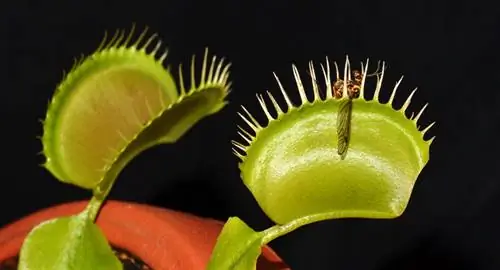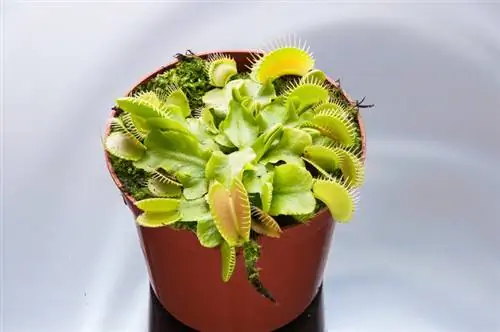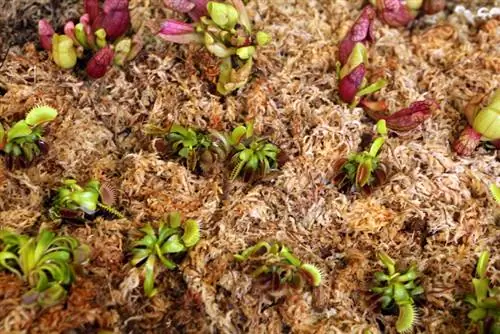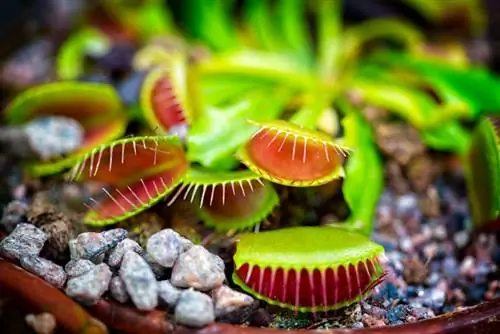- Author admin [email protected].
- Public 2023-12-16 16:46.
- Last modified 2025-01-23 11:20.
In nature, the Venus flytrap grows in very nutrient-poor locations - only in a limited area in the south of the USA. If the carnivorous plant receives too many nutrients, it will die. It is therefore better never to fertilize Venus flytraps.
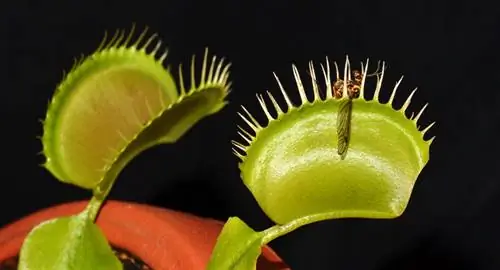
Should you fertilize Venus flytraps?
A Venus flytrap should never be fertilized because it grows in nutrient-poor locations and fertilizer can cause the plant to die. Venus fly traps obtain their nutrients from trapped insects and, if necessary, from the plant substrate.
Never fertilize Venus flytraps
One of the most common care mistakes when keeping Venus flytraps is regular fertilization of the carnivorous plant. Additional fertilizer applications are not only unnecessary, but often also cause the plant to die.
Even though it is often recommended to give the plants some diluted orchid fertilizer every now and then, this is not advisable. In most cases there are more than enough nutrients in the plant concentrate. There is a risk of over-fertilization with additional fertilizer.
Venus fly traps also get their nutrients from the insects they capture with their trapping flaps.
Additional feed to Venus flytraps?
Many beginners believe that it is necessary to feed a Venus flytrap regularly. That is not necessary either. Even if there are no insects in winter, for example, the nutrient supply in the substrate is more than sufficient.
Venus flytraps store nutrients in the leaves. They release these when there are not enough insects.
If you do want to feed the plant, only use live insects that are not too large. Don't feed too much at once. Remember that the trapping flaps of a Venus flytrap open a maximum of seven times and then die.
Regular repotting ensures sufficient nutrients
Even if the roots of a Venus flytrap are not strong, you should regularly plant the plant in fresh planting substrate. Since this consists largely of peat, it breaks down over the months and needs to be replaced.
Repot the carnivorous plant in early spring.
- Fill clean pot with fresh substrate
- moisten well
- Carefully unpot the plant
- remove old substrate as completely as possible
- Put plant in new pot
- fill with substrate
By changing the substrate you provide the Venus flytrap with new nutrients.
Tip
With the irrigation water, the Venus flytrap receives important minerals. Basically, only water with rainwater, as hard water is not tolerated at all. As a replacement, use still mineral water and only in exceptional cases distilled water.

